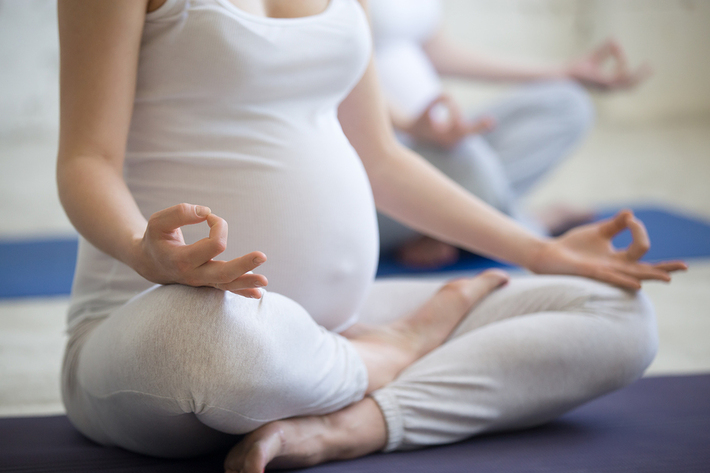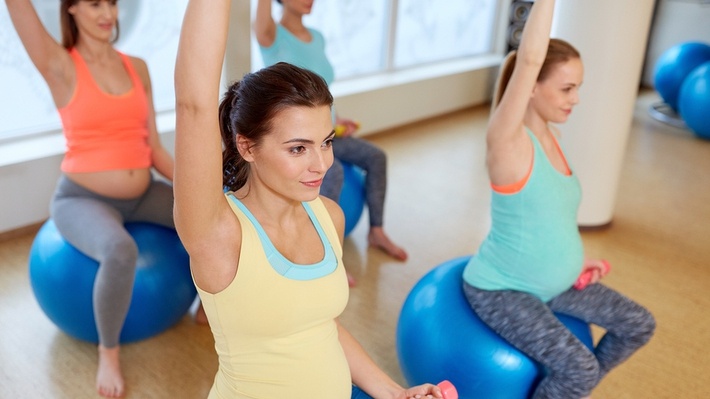Prenatal and Postnatal Fitness: A New Approach for Fitness Businesses
Gone are the days when pregnant women were expected to stay in bed and rest because they had a “delicate” condition. Not only do we now know that exercise can play a vital role in supporting a healthy pregnancy, but also that women can continue to workout while pregnant and return to their fitness regimens just a short time after giving birth.
You don’t have to take our word for it. Just look to Paula Radcliffe, who won the New York City Marathon just seven months after having a baby, largely because she maintained her training routine while pregnant. Catering to this increasingly exercise-minded demographic can mean big business for gyms. Here’s a closer look.
A Mandate to Move
Think R&R is the order of the day for pregnant women? Think again. In addition to helping pregnant women stay in shape, exercise can yield many benefits according to the Mayo Clinic, including reducing backaches, constipation, bloating and swelling; boosting your mood and energy levels; promoting better sleep; preventing excess weight gain, and supporting muscle tone, strength, and endurance. It is also linked to reducing the risk of gestational diabetes. Then there’s the fact that staying active can help women prepare for the rigors of labor and delivery.
In fact, not only does the American College of Obstetricians and Gynecologists recommend that pregnant woman attempt to get in at least 20 to 30 minutes of moderate-intensity exercise daily, but there are not any medical limits or guidelines regarding what constitutes too much exercise for pregnant women. Rather, it varies from person to person and relies on the presence of certain warning signs during exercise, including a steady temperature, shortness of breath, dizziness, dehydration, chest pains, and vaginal bleeding, which may indicate overdoing it.
Dr. Jodi Abbott, a specialist in maternal and fetal medicine, told The Daily Beast, “The old-fashioned if you’re pregnant, put your feet up has shown to not be nearly as safe...Exercise and pregnancy is always encouraged. The question is how much is safe….It really does depend on where you start from.”
Programming for Pregnant Members
Just because pregnant women are encouraged to exercise doesn’t mean that working with them is business as usual. For starters, it’s important for pregnant women to check with their health care providers before beginning a new exercise program. Additionally, many gyms use pre-activity screening tools with members prior to taking part in prenatal exercise programs.
Returning to the gym after delivery may also require a few additional measures due to natural changes that occur within the pregnant body. Reema Thakkar, P.T., D.P.T., director of clinical education and assistant professor at Touro College School of Health Sciences in Manhattan, told the American Council on Exercise, “During pregnancy, your body goes through a natural relaxing and stretching regimen to make room for the baby and uterus with the help of relaxing. While this is great for your new bundle of joy, it can often take a toll on your joints that are working overtime with the extra weight and the lack of stability from the ligaments and muscles all around.”

Easing back into exercise -- again with permission from their physicians -- is important, as well as is having realistic expectations. Fitness professionals who work with prenatal and/or postnatal women should work with them to understand the “new normal” associated with prenatal and postnatal bodies.
For gyms looking to increase membership in prenatal and postnatal programs, raising awareness about the benefits of participation can deliver the boost you want.
“Returning too quickly to exercise without proper guidance can lead to poor biomechanics. This forces a new postpartum body to compensate with other muscle groups and can lead to orthopedic injuries in the future. Just strengthening is sometimes not enough. Having a professional work on proper body alignment and proper biomechanics is essential to prevent further injury,” Joanne Donoghue, Phd., A.C.S.M.-R.C.E.P., director of clinical research and assistant professor of osteopathic manipulative medicine at the New York Institute of Technology College of Osteopathic Medicine in Long Island told ACE.
Prenatal programming received mention in What Should We Do’s roundup of 2018 fitness trends, as well as Coalition for the Registration of Exercise Professionals’ (CREP) Worldwide Survey of Fitness Trends. The takeaway for your fitness business? If you can deliver it well, investing in prenatal and postnatal programs at your gym is a win-win. In addition to creating a new stream of revenue, it also helps women enjoy healthier, more active lives.
Earning an even higher place on CREP’s ranking was the use of wearable technology. Request a demo today to learn what the Accurofit System can do for your gym.




Join the conversation